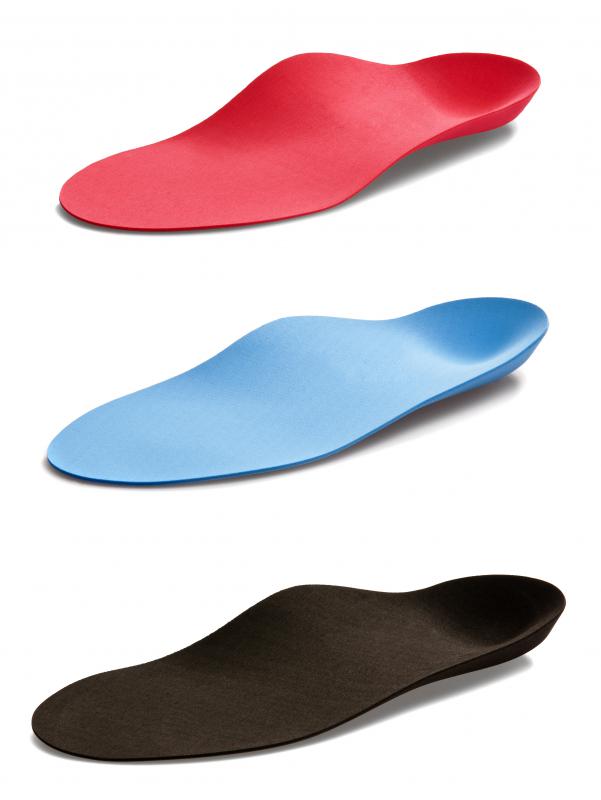At WiseGEEK, we're committed to delivering accurate, trustworthy information. Our expert-authored content is rigorously fact-checked and sourced from credible authorities. Discover how we uphold the highest standards in providing you with reliable knowledge.
What is Insertional Achilles Tendinitis?
Insertional Achilles tendinitis is a condition involving the gradual degradation of the Achilles tendon at the point where it meets the calcaneus in the foot, better known as the heel bone. This form of tendinitis, which causes pain, inflammation, and often swelling in the heel, is common in older people who participate in repetitive-impact activities like running, particularly among individuals who are overweight. Most cases of insertional Achilles tendinitis can be treated like any inflammatory condition with a combination of rest, icing, and medication, but more severe cases may require surgery to remove damaged portions of the tendon.
Actually made up of the tendons of the gastrocnemius, soleus, and plantaris muscles in the calf, the Achilles is the strongest tendon in the human body. It originates where these muscles converge on the back of the ankle and crosses the talocrural, or ankle, and subtalar joints to insert along the middle third of the rear surface of the calcaneus bone. The Achilles is responsible for transferring a great deal of force from the calf muscles across the ankle to produce plantarflexion, or the downward hinging of the foot at the ankle joint, and as such is critical to walking, running, jumping, and climbing movements. Because this tendon sees a lot of use, however, it is susceptible to degenerative injuries like insertional Achilles tendinitis.

The Achilles tendon is separated from the rough bony surface of the heel bone by the retrocalcaneal bursa, which is a sac of synovial fluid that serves as a cushion between the tendon and the bone. Overuse of the tendon can cause an inflammatory condition known as retrocalcaneal bursitis that often accompanies insertional Achilles tendinitis. This is due to a shortage of blood vessels supplying the tendon, which means that any degradation of the tendon or surrounding tissues can take time to heal without receiving the nutrients provided by blood. As a result, overuse of the Achilles can leave it vulnerable to further breakdown.

This condition causes pain where the tendon meets the heel bone during and after exercise and swelling of the heel from edema and/or enlargement of the injured tendon itself. Stiffness behind the ankle joint may also be reported. It is recommended that individuals experiencing these symptoms of insertional Achilles tendinitis see a physician, who will likely suggest the RICE treatment method for mild to moderate cases. This treatment includes resting the injured area, applying ice, compressing the ankle with a wrap or shoe insert to reduce aggravation of the injury, and elevating the foot, as well as taking pain relievers to treat inflammation. More severe cases may require surgery to remove portions of the injured tendon as well as any calcifications, or built-up calcium salts that harden the tissue, that have developed at the injury site.
AS FEATURED ON:
AS FEATURED ON:












Discuss this Article
Post your comments